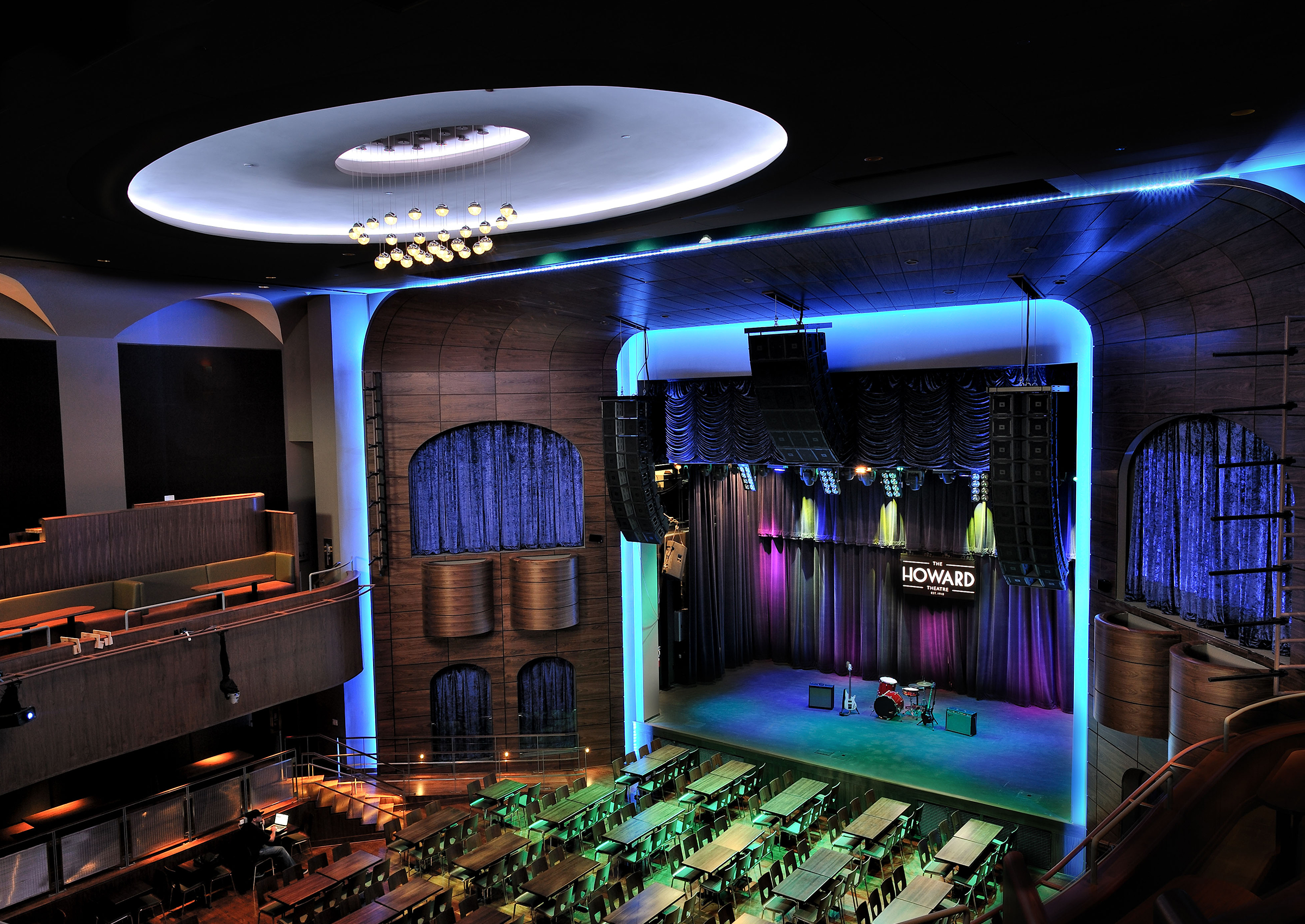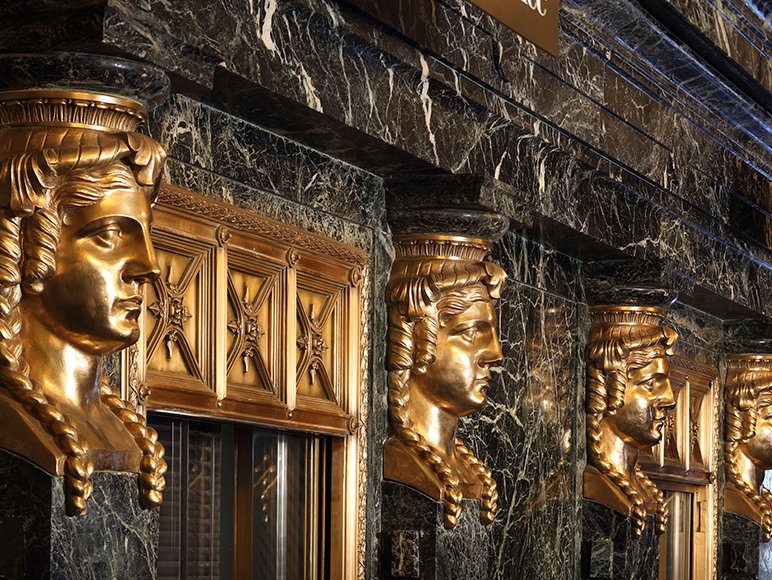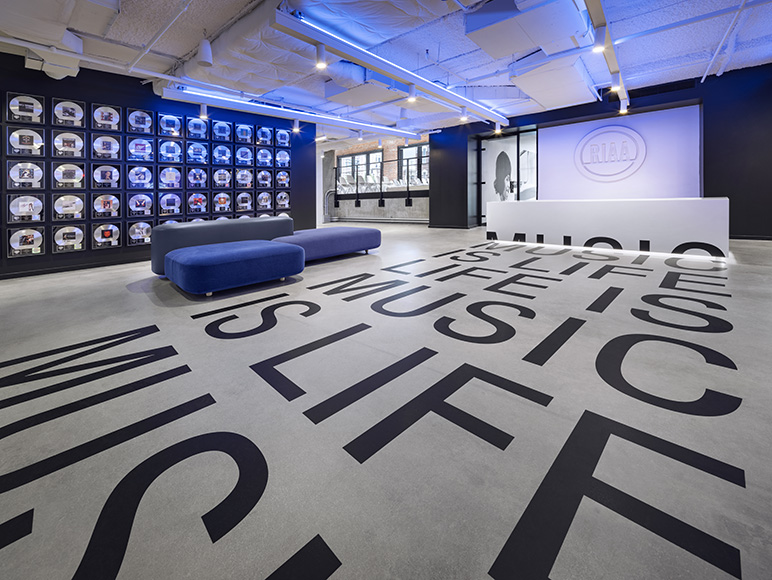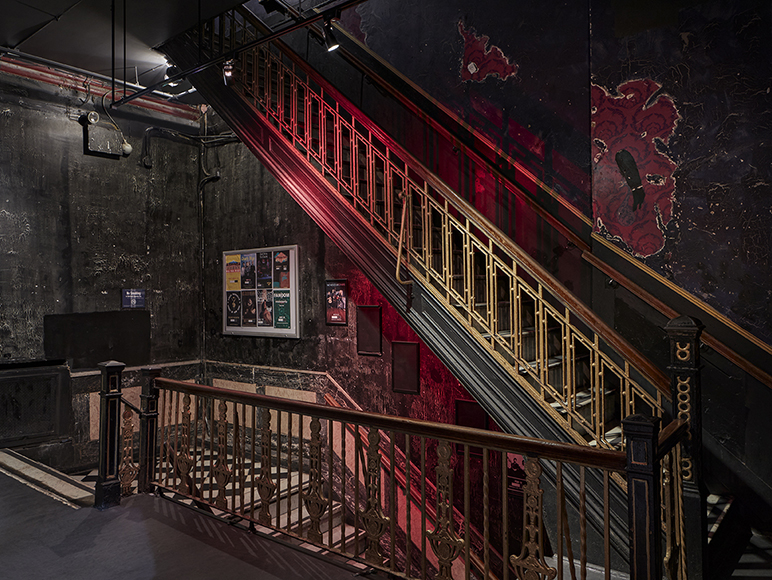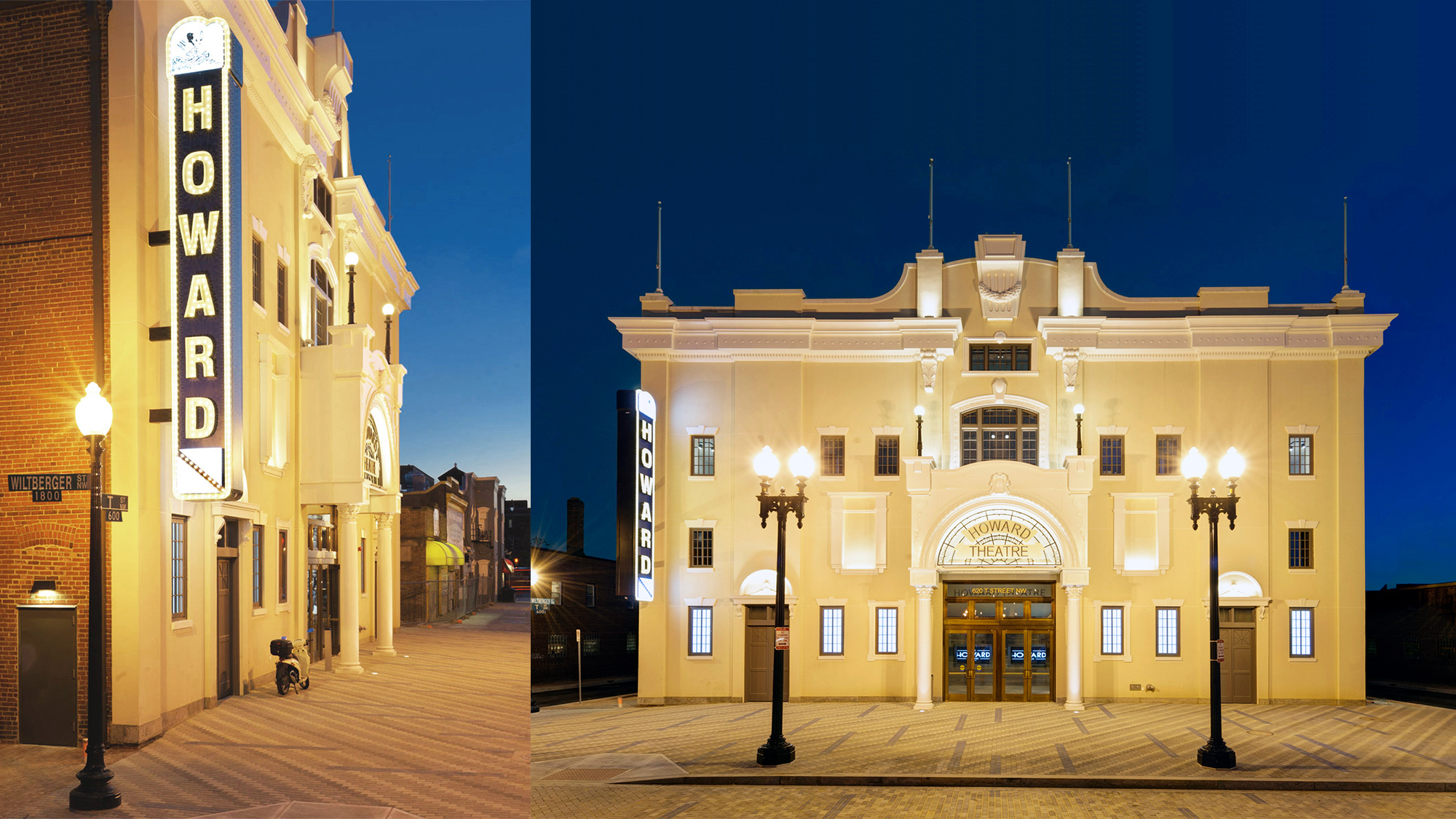
The Howard Theatre
Built in 1910 and predating New York’s Apollo Theatre by a decade, the Howard Theatre was at the center of a vibrant African American community. During its heyday the theatre resounded with the raw talent of greats Duke Ellington and his “American Music”, Ella Fitzgerald, Billy Eckstein, Miles Davis, Marvin Gaye and the Supremes.
Early alterations stripped the building of its classical detailing and brick façade. Windows were covered with a layer of stucco, and the portico was replaced with a streamlined marquee. The building was further altered in 1941, 1974 and closed in the early 1980’s. Our design takes the Howard Theatre’s exterior back to its original appearance, which was guided by on-site investigation and historic photographs. Renovation efforts include an adaptive reuse as a 600-seat multi-purpose, contemporary performing arts facility that accommodates patrons in a mixture of fixed and flexible seating.
To make the theatre more versatile and economically sustainable, the architects excavated a 10,300 square foot basement which houses a new 2,700 square foot kitchen to cater to the theatre’s full-service dining menu and events such as weekly Gospel Brunches with the Harlem Gospel Choir and other special functions geared to the needs of entertainment that will be performing at the venue. To bring the community together and ensure that this iconic theatre thrives, a second phase of this project is proposed as an adjacent educational center that includes recording facilities, classrooms, and a museum. This design won unanimous approval from the DC Historic Preservation Review Board. Our work is designed in accordance with the Secretary of the Interior’s Standards for Rehabilitation in order to qualify the project for the HP Tax Credit.
Location
Washington, DC
Size
600 Seats
Industry
Arts, Culture & Education
Services
Architecture
Historic Preservation
Interiors
Theatre Design
Recognition
AIA DC Award for Excellence
AIA Presidential Citation
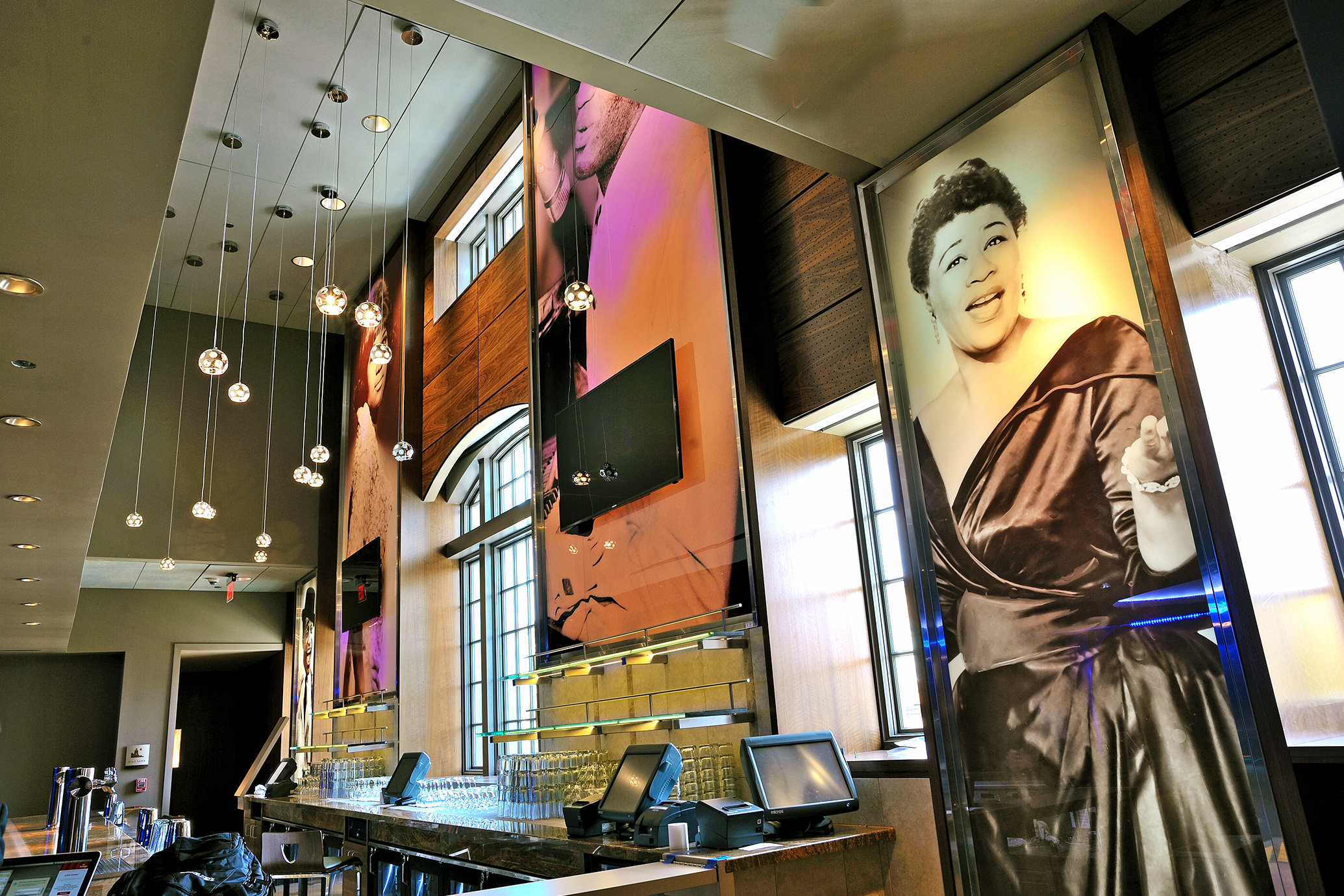
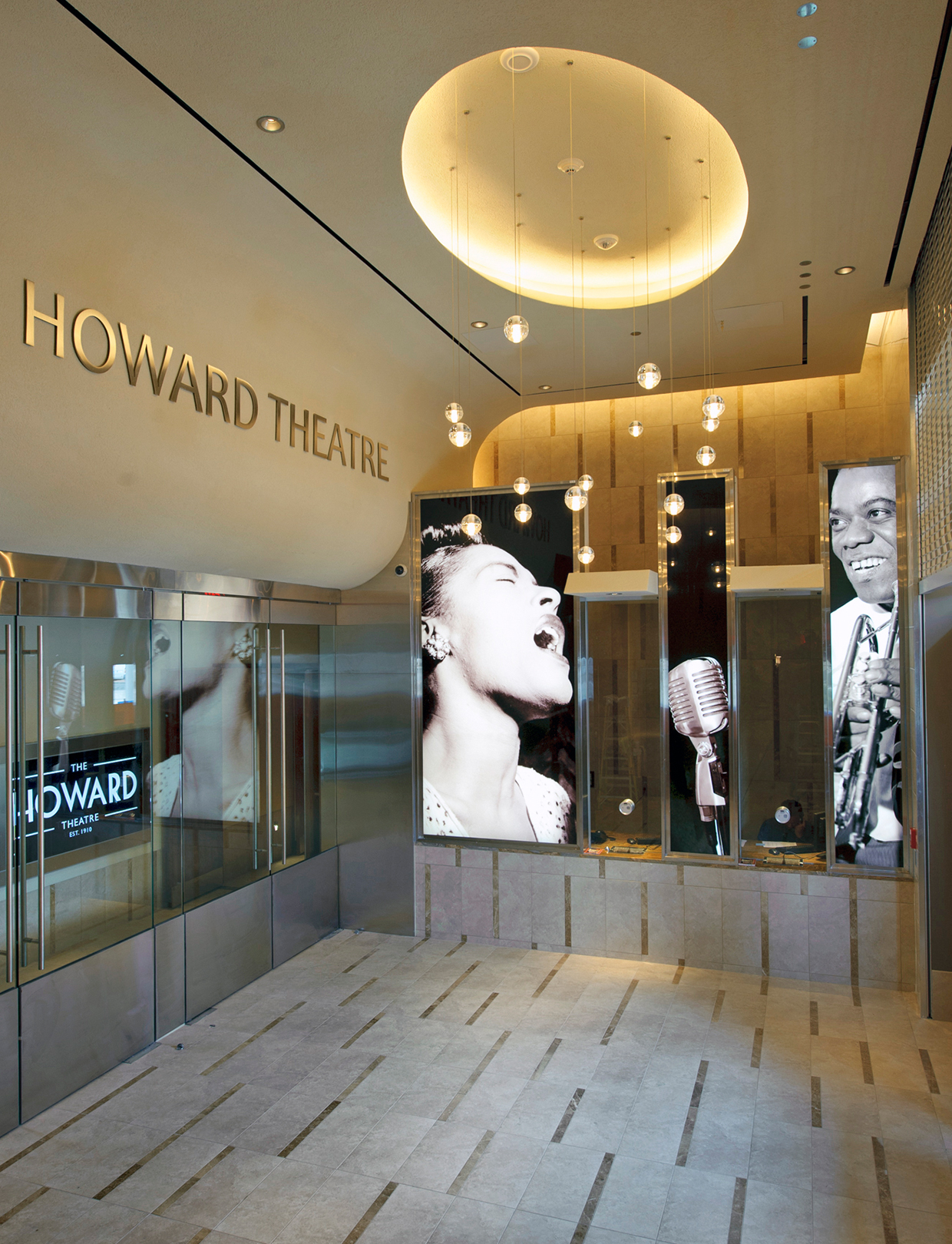
Guided by on-site investigation and historic photographs, our design intervention takes the Howard Theatre’s exterior back to its original appearance while maximizing the flexibility of the interiors.
